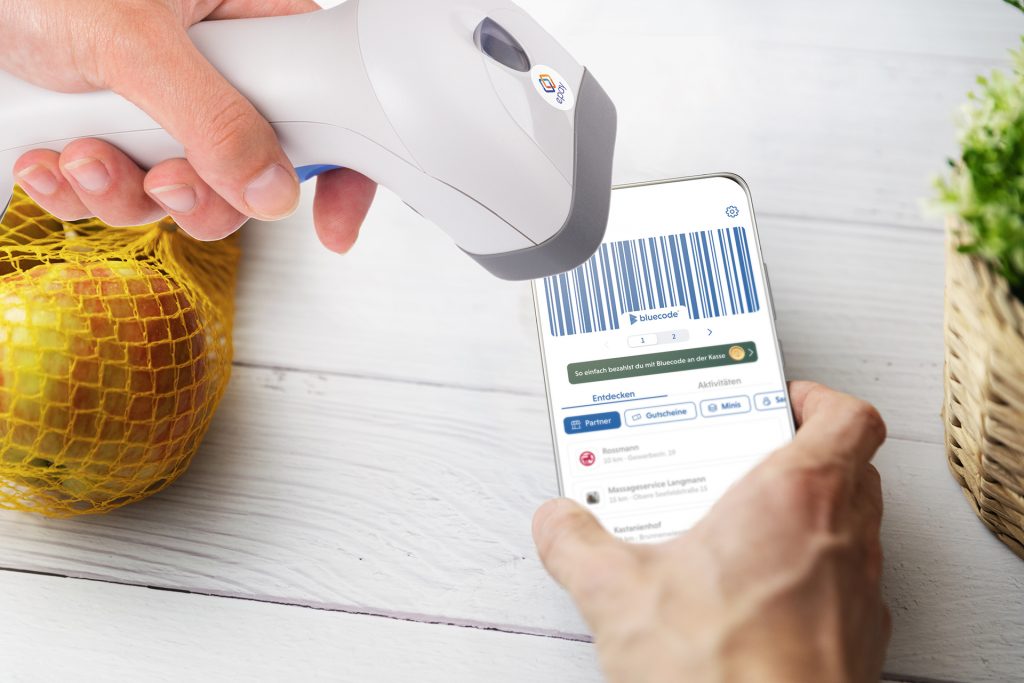Update
Next Generation Payment Part 2 – Europe follows suit
Corona crisis influences our payment behavior
While customers in Asia already pay their electricity bill via QR code, cash affinity is still high in Germany: only 13% of smartphone owners [1] use mobile payment apps like Apple Pay. However, due to Corona, Germans have changed their payment behaviour, at least temporarily, and have predominantly used card payments for hygiene reasons.
Due to the purchasing power of Asian tourists, alternative payment methods such as Alipay were already integrated into the POS systems of some retailers in Germany some time ago, although as of today they do not yet work for German bank accounts.
New payment method from Austria
New payment methods are not only coming from Asia. Bluecode from Austria currently has 800,000 customers and can be used with a German checking account. The app generates a new barcode for each purchase, which is scanned by the merchant, and also offers coupons, collectible passes, loyalty cards and Bluecode Rewards . In addition to stores, Bluecode can also be used to pay at select online stores and vending machines. Bluecode functions as a white-label solution, i.e. it can be integrated into other apps and thus enables providers to keep the customer journey and interaction in their own platform. One example of a successful integration of Bluecode is the Jö app, which is used by almost every second Austrian. The Jö Bonusclub is Austria’s largest multi-partner bonus program and works with retailers such as OMV, Penny and Billa. Customers can both collect and pay for Jöpoints with a single scan. The open payment platform from Bluecode is set to grow with planned growth across Europe and recently saw another win: the 15 million HUAWEI customers can now also use Bluecode and add it to the HUAWEI wallet.

Europe follows suit
Other European countries are also following suit and launching their own alternative payment methods. Many of them are now part of Alipay+, like Momo Pocket from Spain or Pivo from Finland [2]. Italy´s Satispay offers savings, money transfer options and contactless payments in stores to its 1.3 million users.
Differences with Asia exist not only in user behaviour, but also in the technical integration of QRWallets in retail stores. While many stores in Asia rely on static QR codes, the more sophisticated technical systems in European retail require an API checkout interface. Using the epay integration module , all common QR code wallets as well as other common card and noncard-based payment methods and digital value-added services can be accepted with a connection to the retailer’s checkout without having to constantly adapt the checkout interface. This means that the complexity retailers face when designing and updating their payment mix can be significantly reduced with just one interface.

The future is bright
Although Germany still has a preference for cash, it is only a matter of time before the many new payment methods with their attractive offers and functions become established here and revolutionize our payment behaviour. Four out of five Germans have already used a QR code [3] and the trend is on the rise, especially among young people. Already 55.4% of merchants have integrated QR code readers and half use them for mobile payments [4].
[1]https://www.bundesbank.de/resource/blob/855642/cabf0971e0f0697d688dcc57c0cb65d3/mL/zahlungsverhalten-in-deutschland-2020-data.pdf
[2] https://www.epassi.fi/en/news/epassi-european-mobile-wallet-collaboration
[3] https://blog.wiwo.de/look-at-it/2021/05/04/vier-von-fuenf-deutschen-haben-schon-qr-codes-gescannt-die-haelfte-ohne-sicherheitsbedenken/
[4] EHI-Studie Zahlungssysteme im Einzelhandel 2020
Accept the payment methods of the future today. Offer your customers payment with QR and barcode and expand your payment portfolio with epay.

